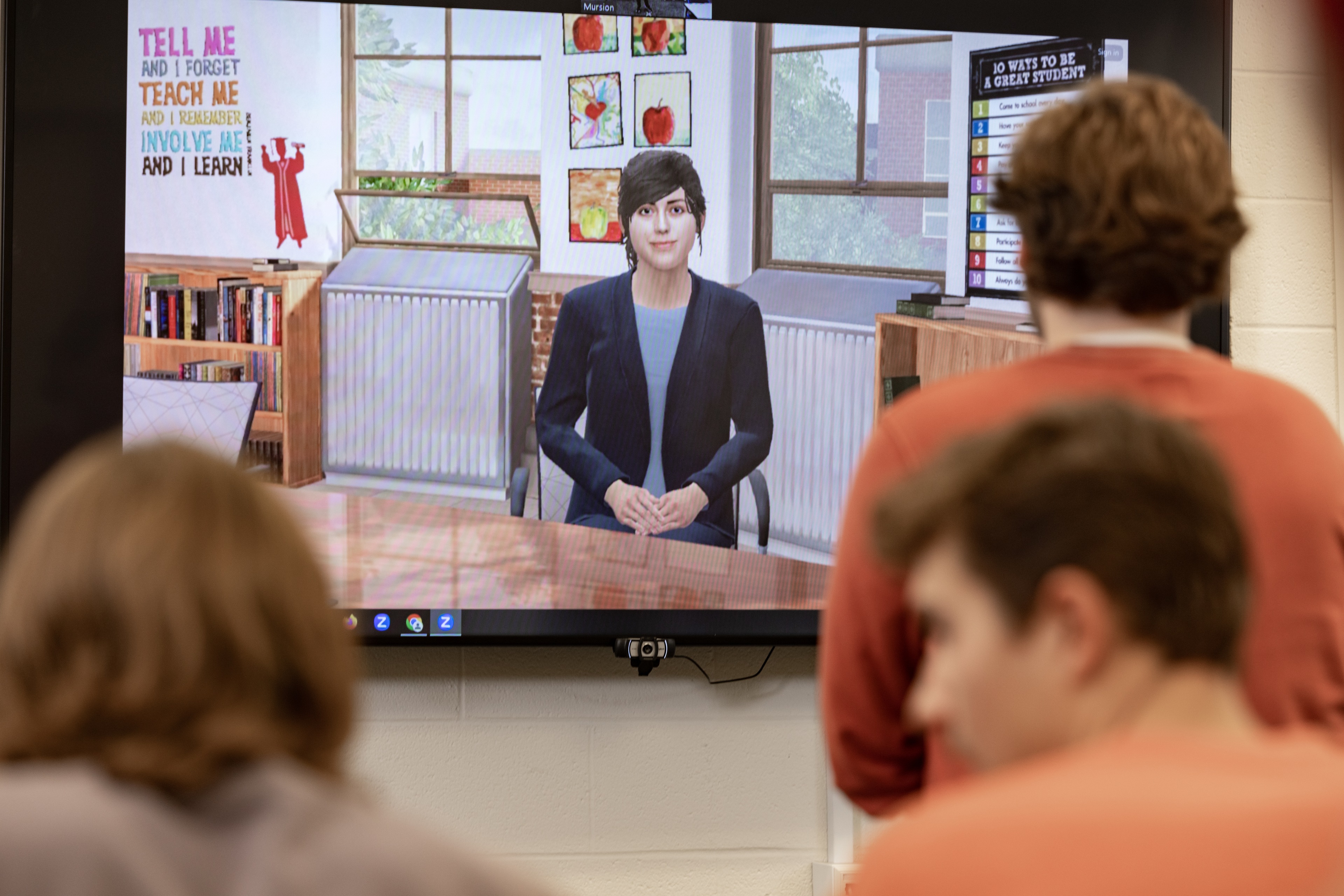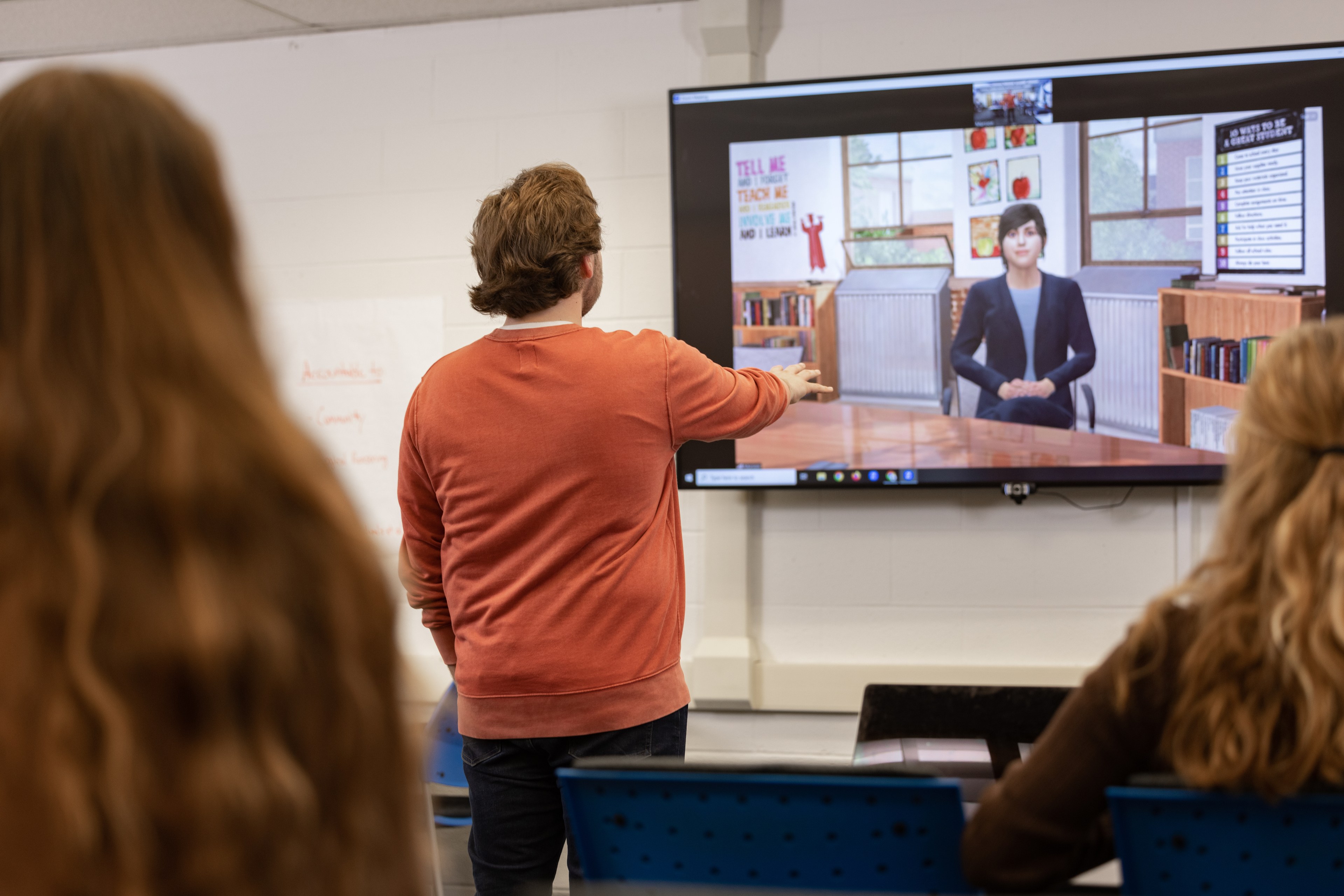
BGSU leverages virtual simulations as 'next step' in mental health trainings
Estimated Reading Time:
Use of Mursion software allows trainers to create scenarios that benefit participants
Knowing what to do in case of a crisis is a key focus of mental health trainings at Bowling Green State University, and a new technology is allowing participants to practice newly acquired skills in real time.
BGSU is leveraging mixed reality platform Mursion – in which participants interact with avatars controlled by a real human – to practice dealing with difficult situations like a mental health emergency, alcohol misuse, hazing or cases of possible sexual misconduct.
BGSU, which is the only university in Ohio to use the technology in the College of Education and Human Development to help teacher candidates sharpen their classroom skills, has since branched out with a collaborative approach to improving its mental health education as well.
Trainings, which BGSU offers to local school districts in addition to its own faculty, staff and students, already sought to empower the greater learning community with knowledge.
Now, participants can take the lesson and directly apply it to a scenario in which an avatar simulates a student who is experiencing a crisis.
“It's a virtual simulation where the avatar is a digital person that is live and interactive,” said EDHD Grant Program Manager Beth Ash. “There is actually a human simulation specialist behind the avatars, so the participant is interacting with the avatar, and the avatar responds to what the participant says.”
When Ashley Hartman, health educator - mental health focus in the BGSU Office of Health and Wellness, saw how Ash was using the technology, she said she saw a natural fit for trainings that educate faculty, students and staff about mental health occurrences they might face.
The simulation provides a clear benefit in that it provides a structured, real-world scenario for participants to interact with an avatar in the throes of a panic attack or other scenario discussed in the training.
The group can then pause at any time, allowing everyone in the room to discuss what happened.
“When you use the simulation, you actually get to use the skills we’re talking about in real time,” Hartman said. “What I love is that you can pause and get feedback from other participants and the trainers, then dive back in. It’s one thing to teach people the skills, but it’s another to get them practicing in a safe environment.”

Because the avatars react to something a participant says, the situation evolves in ways that inform the training, Ash said.
“If the participant is acting judgmental, the avatar might shut down or get frustrated. If the participant is showing empathy, the avatar might open up and share what’s going on,” Ash said. “It’s mixed reality, so there is the computer-generated avatar animation, but there is a person behind them. It’s not AI or virtual reality – there’s a person behind the avatars.”
More than 120 educators from K-12 districts across northwestern Ohio completed Mental Health First Aid trainings funded by a three-year, $1.8 million grant from the United States Office of Justice Programs (OJP) Preventing School Violence: BJA's STOP School Violence Program.
Additionally, more than 1,000 faculty, staff and students have received mental health training since the University received a Garrett Lee Smith Campus Suicide Prevention Grant in 2022.
One of the pillars in the BGSU Community of Care initiative is mental well-being, and the Mursion technology adds a new layer, Hartman said.
Trainers can not only create a scenario that participants may encounter in real life, but use avatars to implement best practices as they learn.
“Interacting with one of the avatars actually allows you to demonstrate the skill,” Hartman said. “It puts you in a much more real-world situation where you can build up a capacity for the skill. It’s like the difference between saying what you would do in a CPR situation and actually practicing on a CPR dummy.”
So far, feedback has been overwhelmingly positive as participants gain confidence that allows them to respond to challenging situations in their professional lives.
“The training is extensive and very specific, but using this technology is really a next step in using what you learned before you’re in a real-life situation like a student having a panic attack,” Ash said. “That gives someone confidence before they have to use that skill for real.”
Related Stories
Media Contact | Michael Bratton | mbratto@bgsu.edu | 419-372-6349
Updated: 10/23/2024 11:17AM




